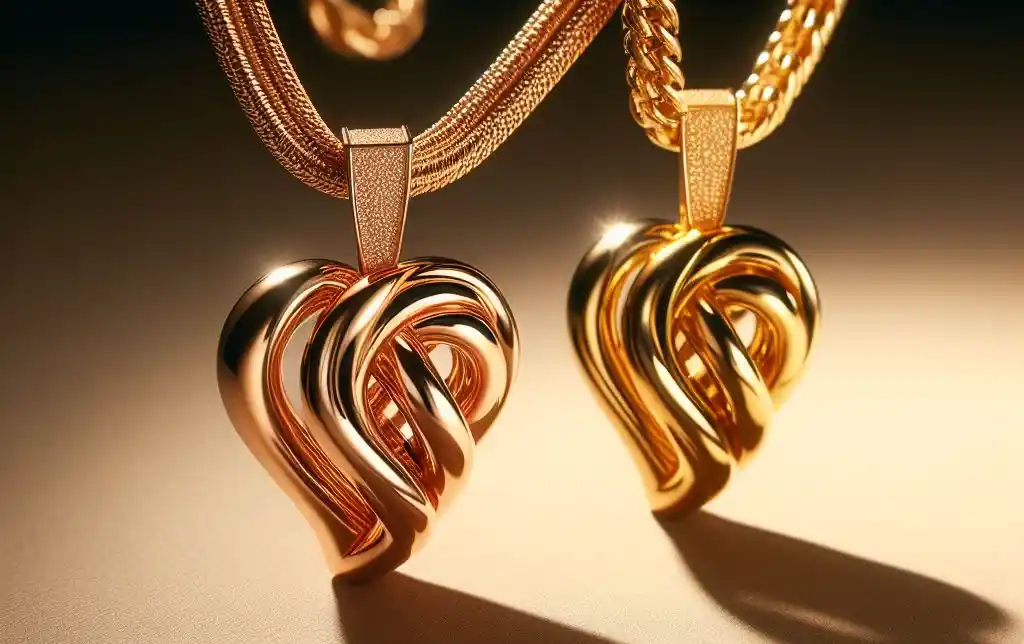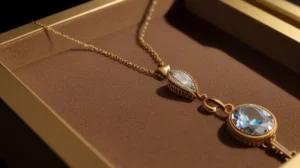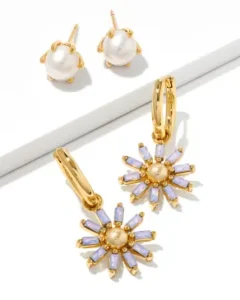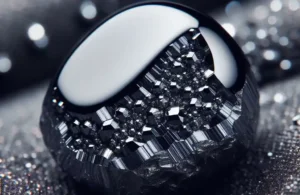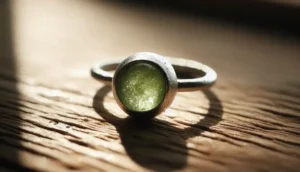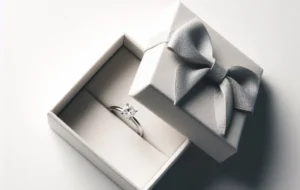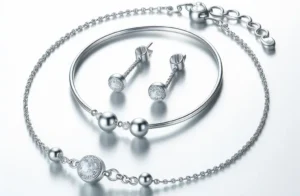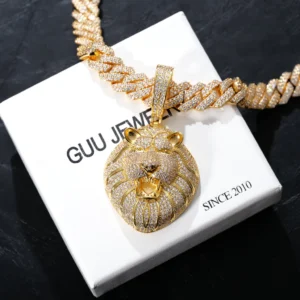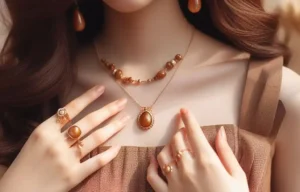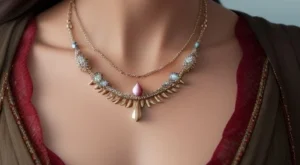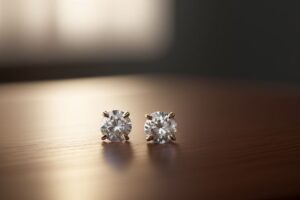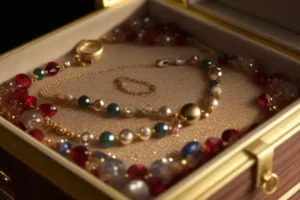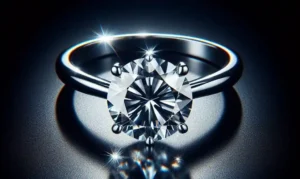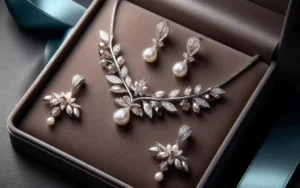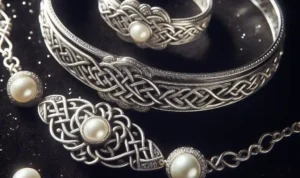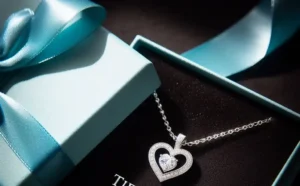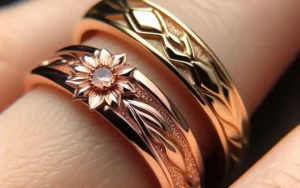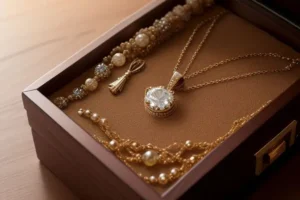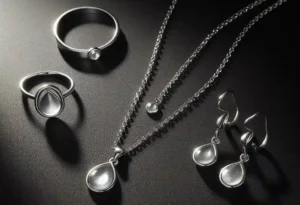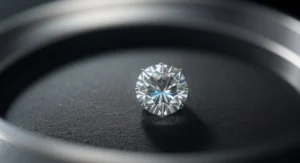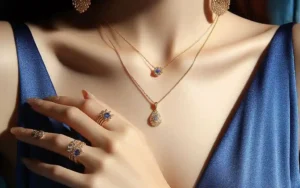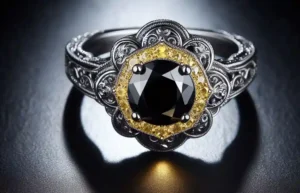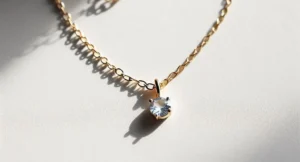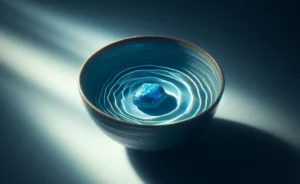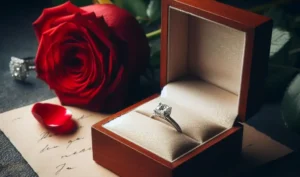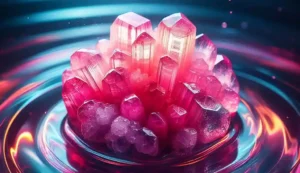Champagne Gold vs Yellow Gold: When it comes to selecting the perfect piece of jewelry, the color of the gold can significantly impact its look, feel, and even the statement it makes.
Two popular options that often come up in conversation are champagne gold and yellow gold. Though they may seem similar at a glance, there are several distinctions between the two that are worth exploring.
Whether you’re in the market for a new ring, necklace, or watch, understanding the differences can help you make a more informed decision.
Understanding the Basics: Composition and Alloys
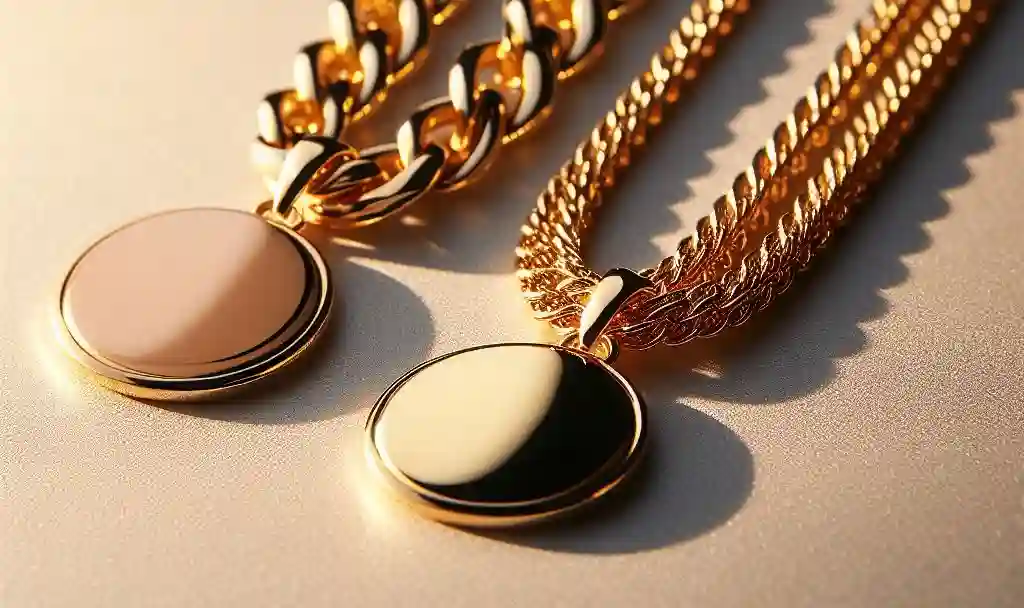
The creation of durable and visually appealing gold jewelry starts with understanding the metal’s basic composition and the role of alloys. Pure gold, known for its softness, is seldom used in its raw form for jewelry due to its inability to withstand daily wear and tear.
To enhance its strength, gold is mixed with various other metals, creating what is known as an alloy. This process not only augments the durability of gold but significantly influences its resultant color, giving rise to different hues like yellow gold and champagne gold.
For yellow gold, the alloy is typically comprised of gold, copper, and zinc. This traditional mix retains the natural luster of gold while imbuing the metal with additional strength. The copper provides the alloy with its characteristic warm, golden color, which is synonymous with the classic appearance of gold jewelry.
Champagne gold, on the other hand, takes a slightly different path in its alloy composition. It primarily involves gold and a higher percentage of silver, which is sometimes complemented with copper or zinc to achieve its unique color.
The inclusion of silver in larger amounts compared to copper results in a paler, more subdued hue, distinguishing champagne gold with its soft, elegant glow.
This delicate balance of metals affects not only the aesthetic appeal of the jewelry but also its wearability, making the understanding of alloys a crucial element in the selection of gold jewellery.
Champagne Gold vs Yellow Gold: Color Differences
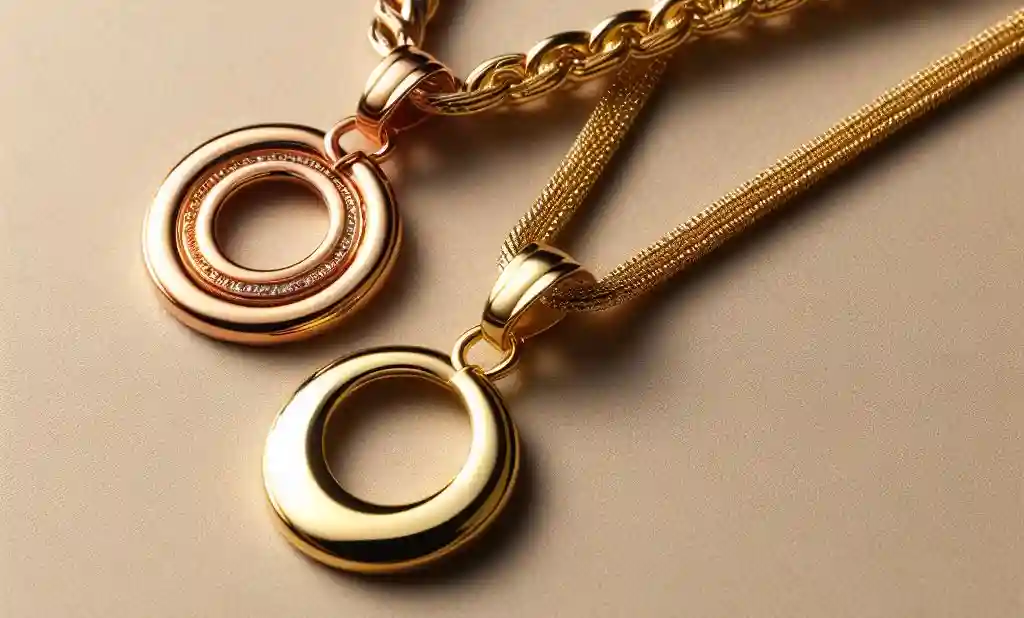
The immediate distinction between champagne gold and yellow gold lies in their unique hues, each offering its own visual experience. Yellow gold shines with a classic vibrancy, its deep, rich golden tones reminiscent of the historical and cultural wealth associated with gold.
This shade is often celebrated for its brilliance and traditional appeal, making it a longstanding favorite in jewelry design.
Conversely, champagne gold presents a more subtle beauty. Its color, a delicate blend of gold with a higher proportion of silver, exhibits a softer, almost ethereal glow. This paler, more understated hue possesses a versatility that appeals to modern tastes, offering a fresh alternative to the conventional gold palette.
It’s this very subtlety that endears champagne gold to those seeking a contemporary twist on luxury, providing a muted elegance that can harmonize with a variety of styles and occasions.
In essence, the choice between the two gold colors extends beyond mere preference—it’s about expressing personality and style. While yellow gold proudly asserts its presence with a bold splash of color, champagne gold whispers sophistication, making both metals uniquely captivating in their own right.
This diversity in coloration not only enriches the aesthetic landscape of gold jewelry but also broadens the spectrum of personal expression available to enthusiasts and collectors alike.
Durability and Maintenance: Which Lasts Longer?
The resilience of gold jewelry, whether champagne gold or yellow gold, hinges significantly on its karat rating, indicating the proportion of pure gold in the alloy. Both variations can be crafted in a range of karats, thus offering comparable durability if they share the same karat value.
However, the blend of metals in the alloy does more than just confer strength; it also plays a pivotal role in the maintenance and longevity of the jewelry’s appearance.
Champagne gold, with its inclusion of a higher percentage of silver, may show wear differently than its yellow gold counterpart. The lighter, more nuanced shade of champagne gold can be somewhat more forgiving, potentially masking minor scratches and dents that are more noticeable on the vibrant surface of yellow gold.
This characteristic might make champagne gold an appealing option for pieces intended for daily wear, where the likelihood of accruing superficial damage is higher.
Conversely, yellow gold’s deeper hue is not without its advantages. Its maintenance involves routine cleaning and polishing to preserve its lustrous gleam, a practice that can also help in minimizing the visibility of wear over time.
Both types of gold require care and attention to maintain their beauty, but the specifics of their care may vary slightly due to the differences in their alloy compositions and resultant colors.
Price Point: Does Color Affect Cost?
The pricing of gold jewelry, while primarily influenced by the purity (karat) and weight of the gold used, does not directly hinge on the color—be it champagne gold or yellow gold. Essentially, an 18-karat piece, regardless of its color, should carry a similar price tag, given the karat denotes the proportion of gold present.
However, nuances in market dynamics can introduce variations in cost. Demand for a particular color, the rarity of the materials needed for its alloy, and the intricacy of the design are factors that could sway the price.
For instance, if a specific hue of gold becomes trendy or is less commonly produced, its price might see a slight increase due to these external pressures. Additionally, the craftsmanship and designer’s mark-up can further affect the final cost, making some pieces more expensive than others, independent of their gold color.
Thus, while the color of the gold itself does not inherently affect the price, the market context and design complexity surrounding each piece can lead to variances in how much you might pay for a piece of jewelry in champagne gold versus yellow gold.
Matching with Skin Tones and Outfits
One of the most exciting aspects of choosing between champagne gold and yellow gold jewelry is considering how each complements different skin tones and outfits. Yellow gold, known for its warm and vibrant sheen, pairs exceptionally well with darker and olive skin tones, enhancing the natural glow of the skin.
Its rich color creates a stunning contrast against lighter complexions, offering a striking visual impact that can elevate any look. This makes yellow gold an excellent choice for those seeking to add a touch of opulence and warmth to their ensemble.
On the other hand, champagne gold’s allure lies in its versatility and understated elegance. Its soft, neutral hue has a remarkable ability to flatter most skin tones, making it a universally appealing option. The subtle glow of champagne gold jewelry can harmonize with a vast array of outfit colors and styles, from casual to formal wear.
Its muted elegance seamlessly blends with both bold and pastel colors, ensuring that it complements rather than competes with your chosen attire.
Whether you lean towards the boldness of yellow gold or the subtlety of champagne gold, each offers unique advantages in matching with skin tones and outfits.
The choice ultimately hinges on the look you aim to achieve and the versatility you desire from your jewelry, allowing you to express your individual style and enhance your natural beauty.
Occasions and Versatility: When to Wear Each
The versatility of yellow and champagne gold allows them to be suitable for a wide range of occasions, each bringing its unique flair to different settings. Yellow gold, celebrated for its radiant and traditional charm, is especially fitting for grand celebrations and formal gatherings.
Its bright luster adds a touch of luxury and prominence, making it an ideal choice for weddings, galas, and milestone celebrations where you want to stand out. It beautifully complements formal attire, enriching the elegance of evening gowns and ceremonial dress with its timeless allure.
Champagne gold, with its refined and muted elegance, offers a more flexible option, gracefully transitioning from everyday wear to special events. Its understated glow lends a sophisticated touch to professional settings, making it a perfect accessory for work environments and business meetings.
For casual outings, champagne gold adds a hint of luxury without overpowering, enhancing the wearer’s style with a delicate shimmer. Its adaptability also shines in formal settings, where its soft luster harmonizes with a broad spectrum of colors and styles, providing a contemporary alternative for those seeking a modern twist on classic elegance.
By selecting the appropriate gold tone for the occasion, one can amplify their desired aesthetic, whether aiming for the bold brilliance of yellow gold or the subtle sophistication of champagne gold.
The Symbolism Behind the Colors
The symbolic connotations of gold hues delve deep into cultural and personal significance, painting each color with distinct emotional and societal undertones. Yellow gold, with its rich, vibrant luster, evokes images of sunlight and harvest, symbolizing abundance, prosperity, and timelessness.
This color resonates with the warmth of the sun, embodying joy, happiness, and the promise of wealth. It’s a hue that stands out, carrying with it the weight of tradition and the reverence of historical value, often chosen to commemorate significant life events and achievements.
Conversely, champagne gold whispers a different kind of luxury. Its paler, more delicate shade speaks to modernity and subtlety, suggesting sophistication and a refined taste. It leans towards a contemporary aesthetic, appealing to those who value elegance without ostentation.
The muted glow of champagne gold reflects a desire for understated beauty, aligning with current trends towards minimalism and versatility in fashion and design. This color choice hints at an appreciation for the finer things in life, while also prioritizing innovation and forward-thinking style.
In essence, the symbolism behind champagne gold mirrors a bridge between tradition and contemporary elegance, offering a fresh perspective on luxury that’s both accessible and aspirational.
Making the Right Choice for You
Deciding between champagne gold and yellow gold is a deeply personal choice that hinges on your unique preferences, the lifestyle you lead, and the various ways you intend to showcase your jewelry.
As you contemplate your decision, it’s essential to evaluate which hue resonates more with your personal style and complements your existing wardrobe.
Reflect on the occasions where you foresee wearing your jewelry—whether for everyday elegance, special events, or a blend of both. Consider the maintenance aspect as well, and how each type of gold aligns with your willingness and ability to care for it over time.
Understanding how each color interacts with your skin tone is crucial. While champagne gold offers a universal appeal with its neutral, understated elegance, yellow gold provides a warm, vibrant contrast that can accentuate different complexions in its own unique way.
Your choice should also reflect the narrative you wish to express through your jewelry. Are you drawn to the traditional luxury and timeless appeal of yellow gold, or does the modern, subtle sophistication of champagne gold speak to your sense of style?
Ultimately, the decision is not just about aesthetics but about identifying with a piece that feels like an extension of yourself. It’s about choosing a color that not only looks beautiful but feels right, enhancing your confidence and personal expression every time you wear it.
FAQs
Q: Can champagne gold and yellow gold be mixed in a single piece of jewelry?
A: Yes, mixing champagne gold and yellow gold in one piece of jewelry can create a stunning contrast and add depth to the design. This combination allows for a unique aesthetic that capitalizes on the strengths of both hues.
Q: Are there any specific care instructions for champagne gold compared to yellow gold?
A: The care for both types of gold is generally similar—regular cleaning with a gentle solution and soft cloth. However, due to its higher silver content, champagne gold may require occasional polishing to maintain its shine and prevent tarnishing.
Q: Is one type of gold more hypoallergenic than the other?
A: The hypoallergenic properties of gold jewelry depend more on the other metals used in the alloy rather than the gold itself. Both champagne and yellow gold alloys can be made hypoallergenic, especially when made with metals like palladium or platinum instead of nickel or copper.
Q: How do I choose between champagne gold and yellow gold?
A: Your choice should be influenced by your personal style, the occasions you plan to wear the jewelry, and how the color complements your skin tone and wardrobe. Consider both the aesthetic appeal and the symbolic meaning that resonates with you.

